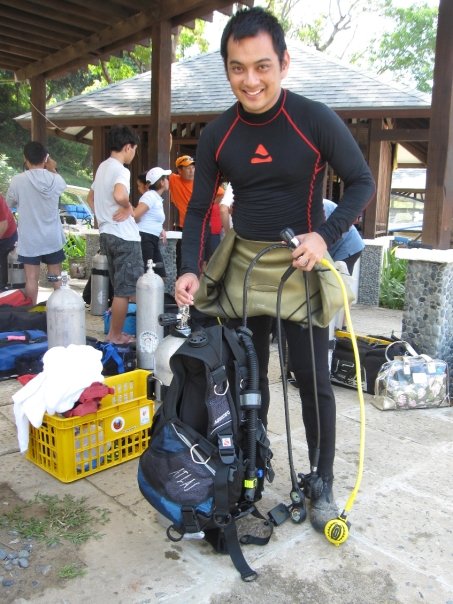The video above documents the clam seeding activity in Anvaya Cove. 79 giant clams were brought in on Friday, December 4 2009 and went through acclimatization in the shallow water a few feet from the shore. The next day, all the clams were tagged and measured. Out of the 79 clams, there were four mature “daddy” clams at about 8 years of age that would be responsible for inducing spawning.
Video footage taken using a Sony Cybershot DSC W230 with Marine Pack. Footage edited with iMovie.
There are only about 37,000 giant clams (tridacna gigas) left in the Philippines and they’re almost all grown from the UP Marine Institute in Bolinao. Realistically, giant clams are already extinct mostly because they become victim to human intervention. Giant clams are a delicacy. They are also used in the construction of holy water pedestals in Churches and ornamental bathroom sinks. Just to give you an idea, the Philippines has seven out of the documented nine species of giant clams in the world, and the tridacna gigas is the biggest.
On December 5 2009, Anvaya Cove (an Ayala Land Premiere development) in Subic organized a giant clam seeding program to rehabilitate their house reef. A total of 79 giant clams were seeded. I joined a group of volunteer divers for the seeding program.
I met Louie and Chen Mencias of Bluewater Consultancy, the guys in charge of the clam seeding operation in Anvaya. If you’ve ever been to Dive and Trek in Bauan, Batangas and Twin Rocks in Anilao, these were the same guys who seeded clams in those sites earlier this decade.
Here’s an example of a giant clam that was seeded around 2003 in Dive and Trek. They’re now really big. I like kicking up the water above its mantle to make the clam open up:
REEForestation: How clams actually rehabilitate reefs
Giant clam seeding is the fastest method to rehabilitate a reef. The concept is really simple — these clams are hermaphrodites which means that when they reach sexual maturity of 8 years (male) and 10 years (they become female), they can release either sperm or eggs into the reef. When one clam spawns, other clams will also start spawning millions of sperm and eggs. The fish love this because this is what they eat. The more clams spawn, the more fish become attracted to the reef. Small fish eat the clam spawn. Big fish eat the small fish. And that’s the circle of life underwater.
Because of competition underwater, fish will start to branch out around the sanctuary, and this is the area where fisher folk are allowed to catch. Give it a few years and a barren reef will flourish.
P.S. Thanks to Rosan for the photo of me gearing up!
